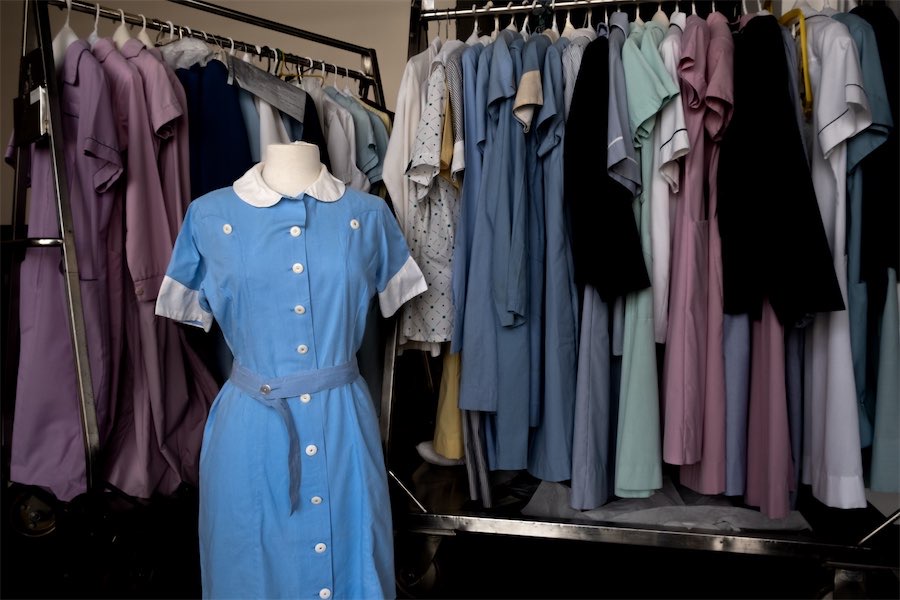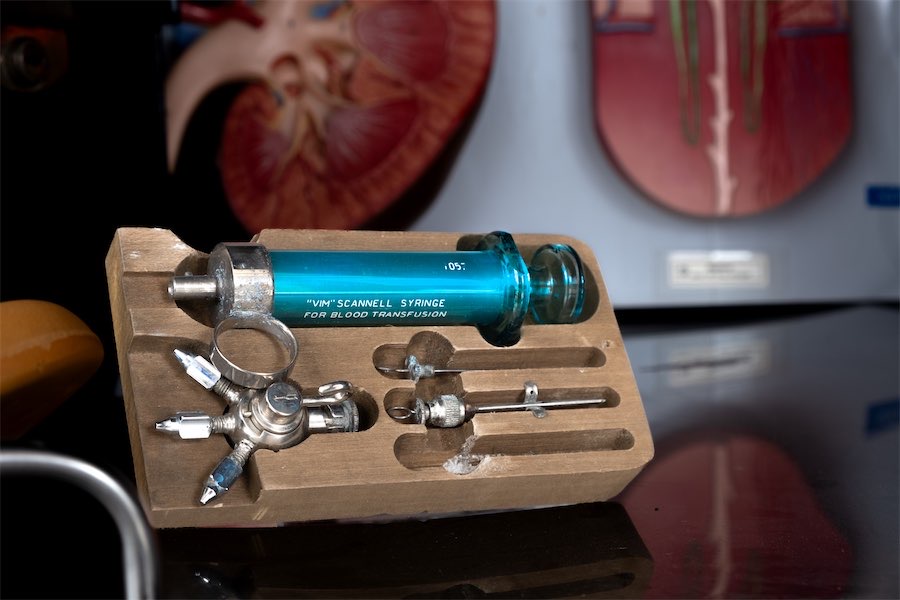
Canberra Museum and Gallery and the Royal Canberra Hospital History Group have joined up to conserve and secure a collection of historic objects from the old Royal Canberra Hospital.
Until the end of the month, Canberrans can have a peek through the museum windows on London Circuit at CMAG staff and hospital volunteers sorting and cataloguing the collection in full view.
Given the thousands who have been treated either in the old Canberra Community Hospital or its successor, Royal Canberra Hospital, on Acton Peninsula, there is likely to be considerable interest in looking at everything from medical instruments to the stylish uniforms, nursing books and even bedpans.
It’s a bit different from some of the more artistic collections that CMAG assistant director Rebecca Richards is used to handling, but she says it’s no less exciting, as she takes me through the items lovingly transported to CMAG, where they will be sorted and catalogued. From them, some culturally significant objects will be added to the museum’s permanent collection.
First up, there’s no getting away from the stylishness of the uniforms.
Whether outfits in attractive pastels with Peter Pan collars; beautifully-tailored, red, heavy wool capes; colourful graduation gowns that remind one of the high esteem in which the nursing profession was held, or the scalloped head caps, the nurses of earlier days set a standard in fashion not readily equalled in today’s institutions.
A Singer sewing machine suggests that some of those items were made in-house.
It’s too early in the curators’ investigations to say who was engaged to design uniforms for nurses, matron and hospital orderlies, but the collection makes it clear that the designers were keen to make the hospital experience as easy on the eyes as possible.

A lot of the work has already been done, Richards says, as evidenced by the detailed, meticulous hand entries by volunteers from the Royal Canberra Hospital History Group, which even specify the “shank” buttons used on some uniforms.
Richards understands that many of the items go back to 1914 or earlier as she shows me a 1914 chair, an ancient metal stretcher on wheels, limb prostheses and braces for the polio outbreak that swept Australia in the mid-20th century.
Monitors, early radiology equipment, an electrocardiogram machine and a quite terrifying looking cauterising machine from the early 1900s speak to the medical advancements and inventions that came about during the hospital’s lifetime.
Perhaps the strangest objects in the collection are tiny replica skulls to show nurses the brain development in babies. A little macabre.
The collection goes up to the 1990s and includes a very odd frisbee inscribed with a warning against chlamydia.
It’s early days. Staff have a lot of work ahead in identifying and cataloguing the objects, but Richards pays tribute to the community historians who have already collected stories of people who’ve been in the hospital, as well as the objects and the books and notes used in teaching nurses.
CMAG will put a call out to the public, seeking stories for its oral history component from people with stories of the hospital or perhaps, like me, had a mother who was trained at the Community Hospital.
To further involve the public, they’ll answer questions from the Canberra community on social media, also showcasing some of the most interesting items from the collection in videos to be released during the cataloguing process.
Until September 29, Canberrans will have to content themselves with peering through the windows, but there’s a large screen explaining what’s going on.

Who can be trusted?
In a world of spin and confusion, there’s never been a more important time to support independent journalism in Canberra.
If you trust our work online and want to enforce the power of independent voices, I invite you to make a small contribution.
Every dollar of support is invested back into our journalism to help keep citynews.com.au strong and free.
Thank you,
Ian Meikle, editor




Leave a Reply